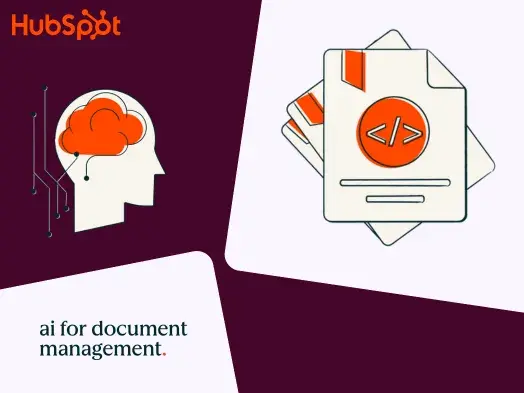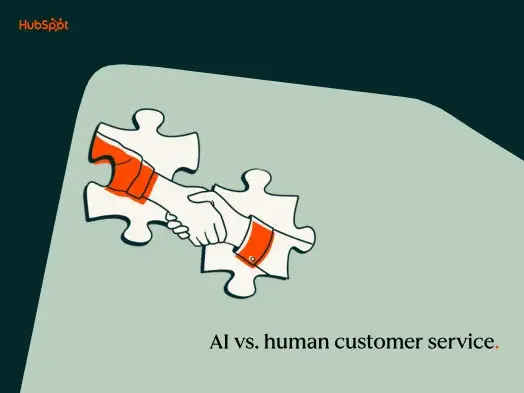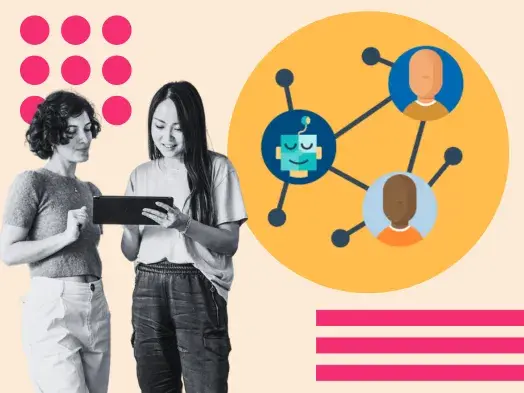In fact, a survey conducted by PwC found that 40% of business leaders are currently investing in AI to improve customer experience. Call centers, knowledge bases, and chatbots are automated and enhanced by cognitive systems that streamline everyday interactions.
Service teams are trending away from reactionary support departments and are becoming mission control centers for customer experience. This is where conversational AI comes into play, ensuring customers get the 'royal treatment’ in the form of an automated personal concierge.
In this post, we’ll explain what cognitive conversation AI is and why it’s ushering in a new era for service teams.
What is cognitive conversational AI?
Cognitive conversational AI relies on an architecture that is developed and based on the principles of Cognitive Science, leveraging mind-like mechanisms to understand, remember, and respond to every customer.

In other words, conversational AI isn’t regurgitating information like Bard or ChatGPT. It’s recalling previous conversations, analyzing sentiment, and engaging with meaningful responses that are uniquely tailored to the user. This makes the chatbot much more dynamic and less susceptible to fatigue (yes, chatbots get tired, too) than traditional AI models.
How are customer service teams using conversational AI?
With a market size expected to reach $29.8 billion by 2028, cognitive conversational AI creates profit-generating services hubs that offer personalized, responsive, and empathetic customer experiences. It‘s not constrained by a traditional chatbot or human limitations -- it doesn’t need lunch breaks or get overwhelmed during peak times.
Here are a few ways service teams are currently using this technology to enhance their customer experience.
Improving Chatbots
Growing enterprises like Apple and Amazon constantly evolve according to customer needs and don't shy away from investing in superior service technology. Walmart, for example, employs an AI-driven chatbot that assists with order tracking, product recommendations, and frequently asked questions. When it was rolled out in Chile, it increased the region’s CSAT by about 38%.

70% of consumers already prefer chatbots for accurate and fast response times and use them for service-related inquiries. As conversational AI continues to improve, chatbots are going to be better at responding to all types of inquiries – not just point-and-click solutions. They’ll be able to manage a frustrated customer, walk someone through a confusing process, or make expert recommendations based on previous interactions with an existing client. It won’t replace a human agent, but it will make your automated systems much more effective.
Personalizing Support Interactions
91% of customers prefer to shop with brands that provide relevant offers and recommendations tailored to their needs. Since cognitive AI systems recall past conversations, learn from customer interactions, and utilize cognitive machinery to process information, they can make personalized recommendations and offer completely unique responses.
Cognitive solutions proactively address customer needs by understanding the context of a conversation, reducing the need for lengthy explanations and back-and-forth interactions. Unlike generative LLMs like ChatGPT, cognitive AI understands human language and communication, creating thoughtful responses rather than patching together available information.
Maximizing Operational Efficiency
IBM's research indicates that businesses can save up to 30% on customer support costs by implementing cognitive AI-powered chatbots. The following features offered by conversational AI allow businesses to reduce associated overhead costs, optimize human resources, and boost revenue and profitability.
- Call Handling: AI systems reduce average call handling times (AHT) by directing calls to the most suitable agent. This improves first-call resolution (FCR) rates, creating better experiences and fewer support tickets.
- Agent Assistance: Conversational AI chatbots offer real-time information and guidance, reducing the number of interactions between customers and human agents. This not only streamlines the support process but frees up time for agents to solve complex or sensitive issues.
- Continuous Learning: By learning from every interaction and adapting to customer needs, conversational AI chatbots constantly enhance their performance over time.
Identifying Revenue Opportunities
Cognitive conversational AIis not just a problem-solver; it's also an opportunity creator. Businesses can upsell and cross-sell by capitalizing on information gathered from an AI system.
For example, unlike standard chatbots that use workflow logic to respond to customers, conversational AI is designed to have dynamic conversations. These interactions are logged automatically for managers to review, giving business leaders detailed descriptions of every customer experience.
This is not only useful for retaining high-value customers, but it also presents the opportunity to sell to existing customers. Say a customer hits a roadblock with their current subscription and could really use a premium product featured at a higher tier. A frontline support agent might not recognize this opportunity or relay it to your sales team. However, an AI system would quickly identify the customer’s needs and alert your sales team of a potential upsell opportunity.
Getting Started With Cognitive Conversational AI
As we progress towards a future where technology and personalization become increasingly intertwined, cognitive conversational AI will play a pivotal role in shaping customer interactions. Getting started with AI might seem intimidating, but teams that are adopting it now are already seeing positive returns on their investment. Over time, early adopters will be better suited to adapt their support strategies as AI technology evolves, making them more dynamic and better positioned to lead their industry in customer service trends.
Artificial Intelligence
.png?width=112&height=112&name=Image%20Hackathon%20%E2%80%93%20Vertical%20(67).png)
.png)
.png?height=613&width=1920)





![How AI Can Unlock Customer Insights [+Expert Tips]](https://53.fs1.hubspotusercontent-na1.net/hubfs/53/customer-insights-ai-1-20241101-2082956.webp)



